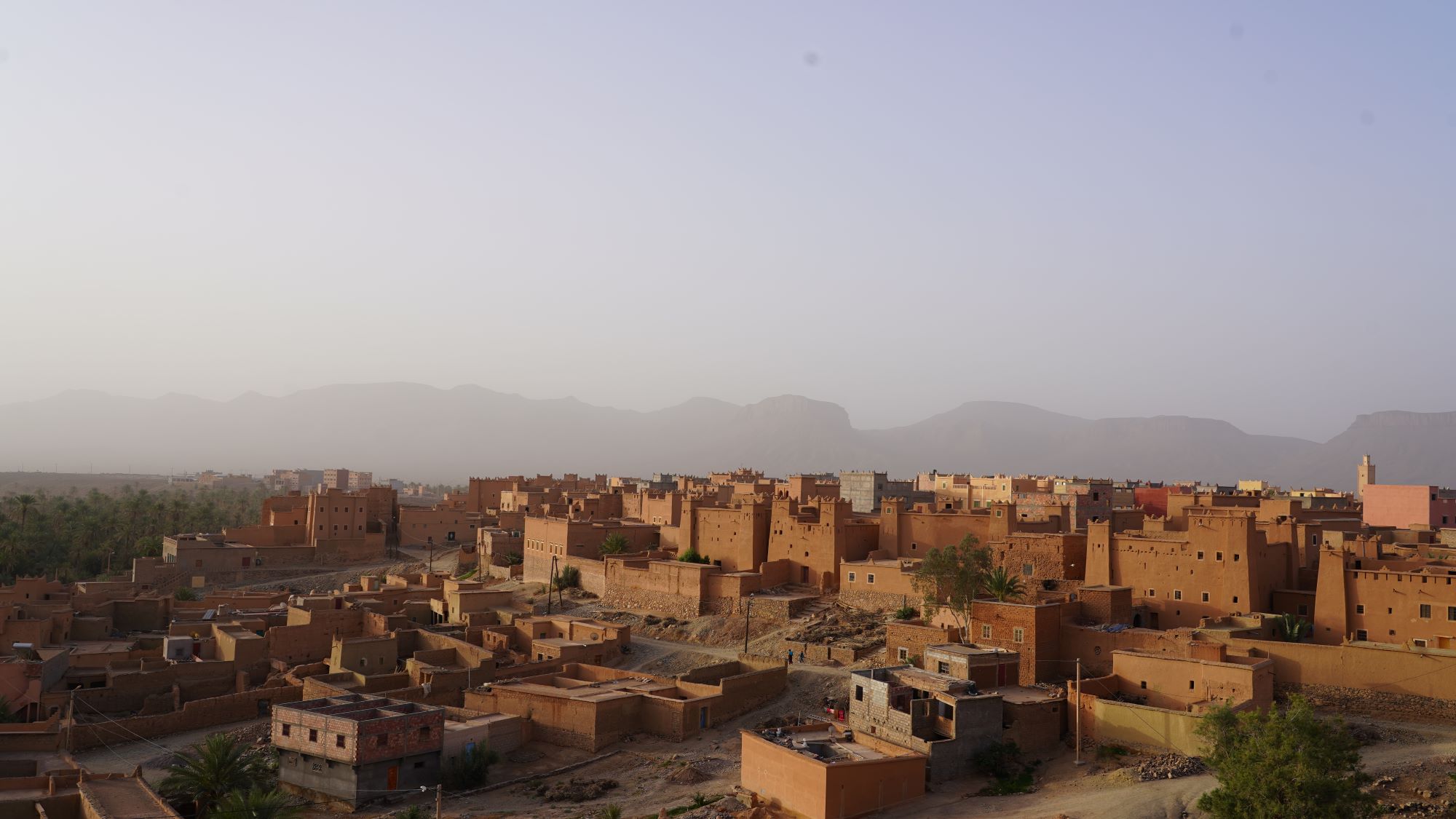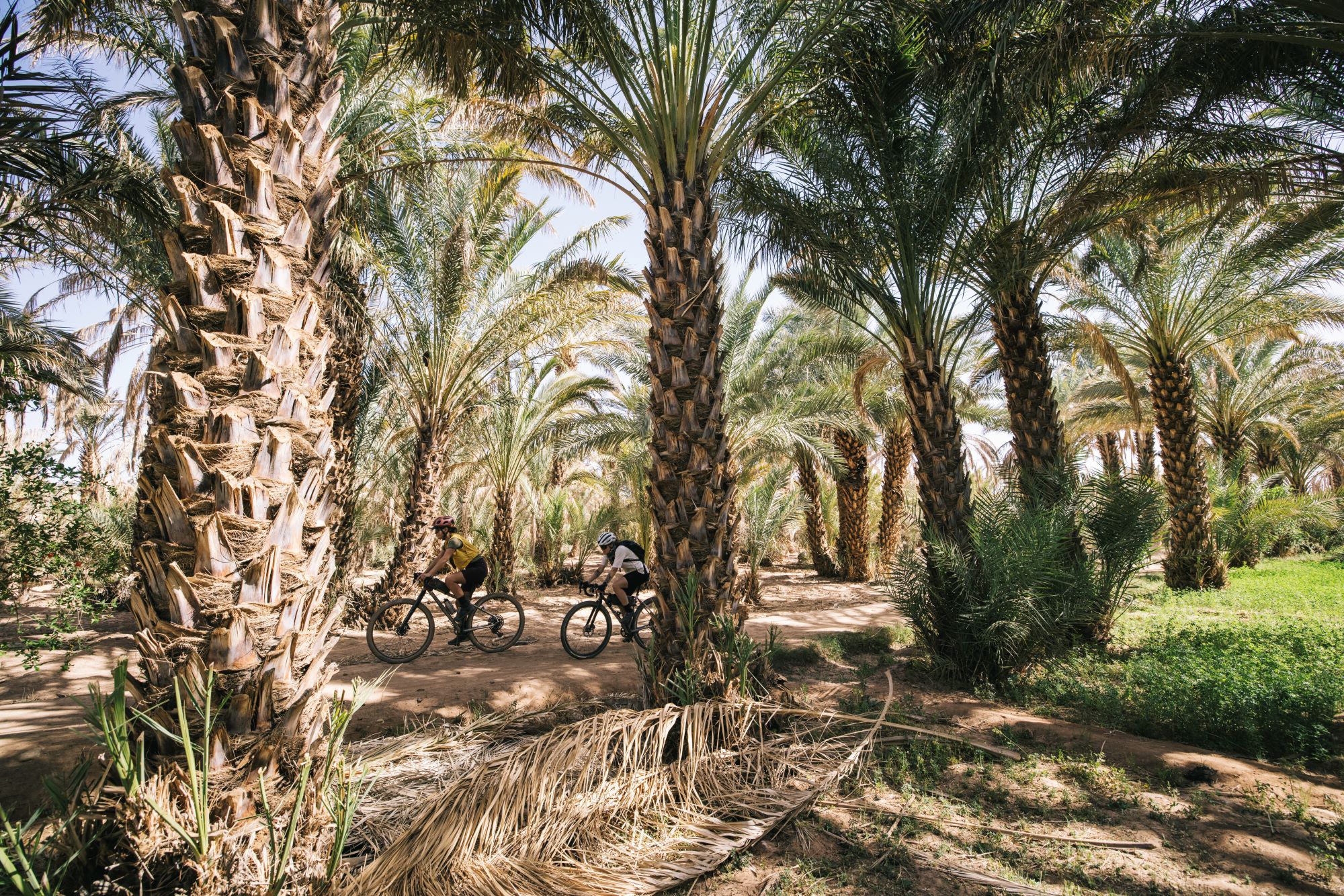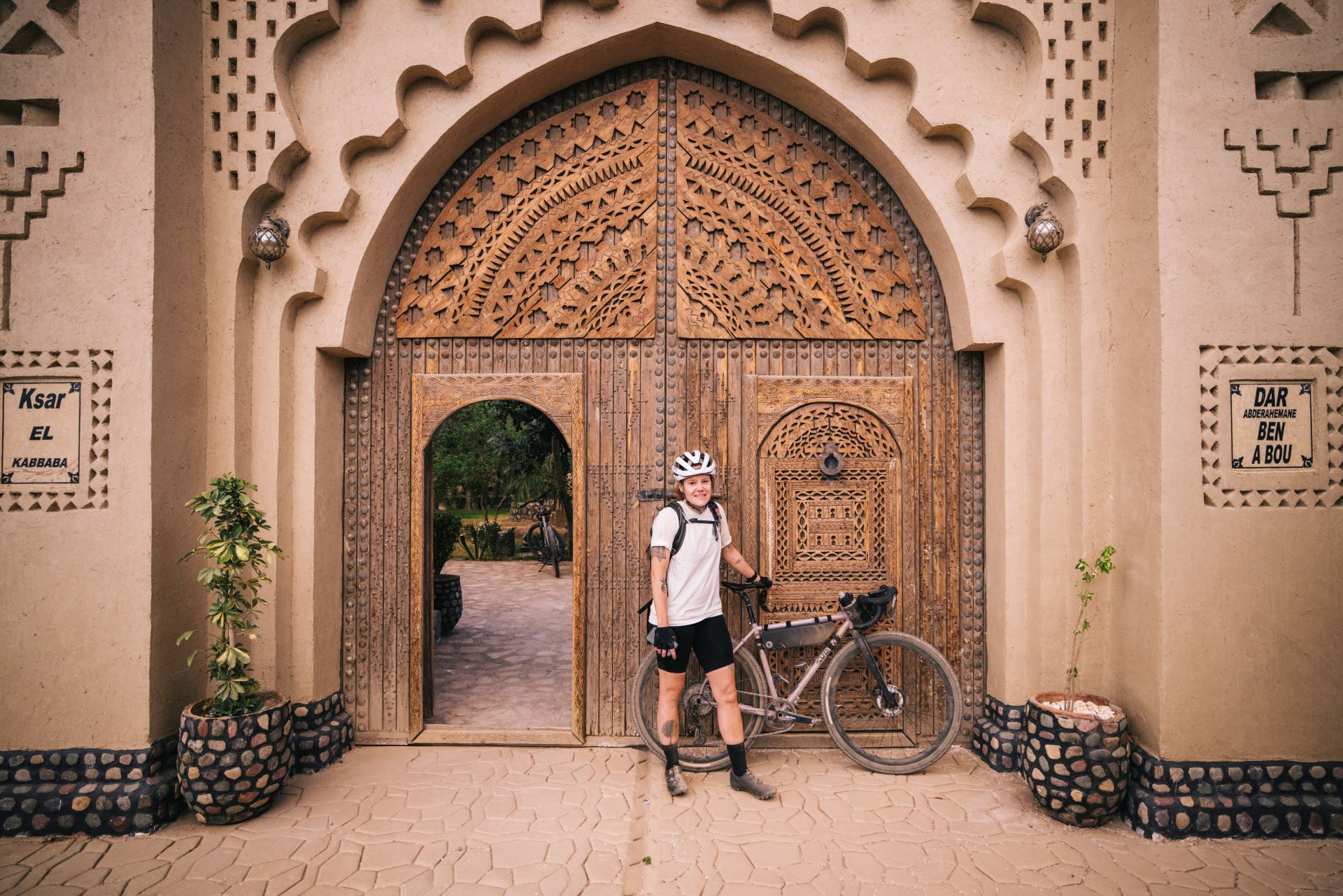From Marrakesh to the Sahara by bike: ancient cities, untouched routes and jaw-dropping views make Morocco a bucket list destination
Biking across Morocco showed me the bicycle’s power to expand horizons, challenge preconceptions and foster connections across cultures


When you receive a text message that simply reads: “Want to go to Morocco?,” you say yes first and ask questions later. I believe my actual words were “uh F*** Yeah”.
How the trip was made possible and how you can replicate it

The purpose of this trip, media relations expert James Nixon explained, would be to go where few media trips have gone before, and, of course, to test some new product in the process. This intimate trip consisted of four journalists, a photographer, a brand ambassador, Nixon and a guide crew. The crucial local knowledge and logistics for this trip was handled by Collin Daulong, founder of bike touring company KC&E Adventures, and his team of local Berber guides and drivers.
On the bike, the latest Hammerhead Karoo unit was our guide through the vast and ever changing landscapes while Fjallraven provided us with the apparel and bike bags necessary.
Nevermind that travel would take as many days as the short-but-sweet time in Morocco itself. I’d never been to the African continent but since childhood, novels and films imprinted vivid images of a mystical land with labyrinthine alleys bustling with traders, shimmering lanterns casting intricate shadows on ancient walls, and the vast, red sands of the Sahara.
Exploring the world on two wheels is such an incredible privilege and I couldn’t imagine a better way to see these images come to life before me.
Thanks to various adventure races like the Atlas Mountain Race, Morocco is slowly gaining recognition as a cycling destination but it’s not Italy or France where all paths have been forged and thousands of cycling routes, hotels and restaurants are at your disposal. In Northern Africa, local knowledge is key, as is a sense of adventure and an open mind. For many, the thought of simply packing up a bike and heading to a country whose culture is so different from our Western day-to-day is intimidating if not a barrier altogether. This is where the bicycle comes in. Pedaling that two-wheeled vehicle enables you to immerse yourself in one’s surroundings completely, interacting with its people and, ultimately, broadening perspectives. And, as I would soon learn, Morocco offers new perspectives in spades.
4 days across Morocco, 4 wildly different landscapes
The Red City

On my first morning in Marrakesh, I awoke to the call to prayer blaring through the city at 5 a.m. The startling yet beautiful "Allahu Akbar" blared from the minaret loudspeakers but as the final "La ilaha illa Allah" was sung, the ancient city center of Medina fell silent again.
We visited Morocco during Ramadan and would be hearing these calls to prayer and meals starting as early as 4 a.m. and ending at 9 p.m. Those adhering to Ramadan would fast from dawn to sunset, meaning they were to abstain from all food and water all day, which would become a problem for our guides. But more on that later.
I made my way up to the hotel's rooftop to witness the first light of dawn casting a soft glow over the patchwork of salmon sandstone rooftops and minarets. The only sounds were the gentle cooing of pigeons and the occasional bark of a stray dog, a stark contrast to the typical cacophony of a western city at dawn, with its traffic, sirens, public transportation, and the yells of those who wander the streets.
The latest race content, interviews, features, reviews and expert buying guides, direct to your inbox!
To shake the travel out of our legs, photographer Andy Cochrane and I took to the still-sleepy labyrinthine Red City for a five-mile jog, zig-zagging through the narrow alleyways, ducking under archways and taking a dizzying amount of turns. Our footsteps echoed across the ancient cobblestones as we took in the ochre walls, darted around donkey carts and refrained from befriending the massive stray cat population. The city was built in 1070 AD, and many of its original structures are still in use today. In fact, little seems to have changed at all appearance-wise, with the biggest change from the olden days being the occasional car or scooter and modern technology like air conditioning and flawless cell phone reception in even the country's most remote corners. As such, we could rely on Google Maps to navigate us back to the hotel in time for breakfast.

Leaving Marrakesh, bikes loaded
The first bike ride would take place in Dra'a Valley, on the Eastern base of the snow-capped Atlas Mountains. To get there, we piled into cars and took a six-hour journey that proved enlightening, picturesque, and regrettably prone to inducing bouts of car sickness.
As we bid farewell to the Red City walls, we passed through the city's more modern developments and the suburbs, where big real estate billboards promised paradisiacal retreats adorned with lush palm trees and Western comforts.
From here, we entered a tableau of agricultural plains and orchards before starting the ascent into the High Atlas Mountains. The landscape transformed into rugged terrain as we navigated through narrow mountain passes, complete with nauseating hairpin turns and sweeping vistas of the surrounding valleys. We glimpsed small Berber settlements and clusters of palm groves surrounding the life-giving streams trickling down from the mountains.

The hazy outline of the Atlas Mountains in the distance at the start of our bike ride
The pass crested at over 2,200 meters (7,200 feet) before taking us back down and into the Drâa-Tafilalet region. A buffet lunch of couscous, tagine-cooked vegetables and olives was had across from the storied Aït Benhaddou. Once a bustling center of Saharan trade, the UNESCO site now stands as a prime example of Moroccan clay architecture and has hosted many a film crew. Gladiator, The Mummy, Game of Thrones and Lawrence of Arabia are among the titles filmed here. Morocco's own thriving film industry is located not far from the storied site with its equivalent of Universal Studios –Cla Studios– greeting passersby along the N9 highway.

We exited the cars surrounded by a whole lot of nothingness.
We exited the cars surrounded by a whole lot of nothingness. A vast landscape of rocky, orange desert stretched out before us with the hazy outlines of the mountain ranges in the distance. Over the coming days, we'd learn that within this apparent nothingness, the desert teems with life and carries pockets of unexpected beauty.
We rode 20 miles into the village of Skoura where a stunningly ornate wooden door welcomed us to downright luxurious accommodations. With a shake-out ride completed, we were ready for the biggest day of the trip.
Redouan Ouzoud

Redouan Ouzoud
On this first ride, I got acquainted with our local guide, Redouan Ouzoud, who was hired by KC&E Adventures to devise the routes. He's of the Berber people, the country's first inhabitants, but also a follower of Islam. He had the tough job of guiding us through the 95-degree weather without taking in any water or food. When he wasn't nearly fainting, he was jovial, quick to crack a joke and passionate about sharing hidden gems and lesser-traveled routes.
He was always keen to answer my questions and share fascinating tidbits about the country, his culture or cycling in this part of the world. An avid outdoorsman and former mountain bike racer, he has summited all the mountain peaks in Morocco either by foot or bike. He challenged any preconceived notions I may have held about how women are seen in Morocco's Islamic culture by sharing that he aims to pass on his bike passion to his daughter, hoping she may one day become Morocco's first pro female mountain biker.
Into Nomad Country

Into the barren valley
On the second day, we traversed the desolate nomad country for nine hours under the baking hot sun. The rugged landscape offered little relief as we followed ribbons of gravel and sandy paths through undulating terrain that looked not unlike Utah’s Canyonlands.
We were remote, going hours before seeing any sign of life anywhere. Yet amazingly, Collin and Redouan told of the nomadic people who live off this land, tending to small flocks of goats, perhaps cultivating some crops by a hidden stream and residing in small rock sheds. We’d be, quite literally, in the middle of nowhere, with no infrastructure or vegetation in sight, when suddenly two kids would come running up to us asking for “stylo” and motioning for our sunglasses. I couldn’t help but wonder that even if I had brought a stack of pens to hand out, what would they draw on? I promptly vowed to myself to bring crayons and coloring books on my next Morocco bike trip.

Lunch under a tarp, a welcomed relief from the baking sun
Lunch was prepared by Collin’s crew, who drove ahead and found a settlement of half a dozen houses where they set up underneath a tarp. As is custom in Morocco, refreshing mint tea was served upon our arrival.
Redoaun, succumbing to the heat without nourishments of any kind, fell asleep on a cot in the corner and would finish the day’s ride on the empty backseat of one of the cars while those who weren’t fasting rode into the town of Nkob, which offers views of the imposing desert foothills on one side and a palm oasis on the other.
Into the desert

Nkob
We left Nkob through a palm grove, enjoying the greenery before returning to the arid landscape leading east toward the Sahara. On the ride, Redouan and I chatted. He taught me basic words in Arabic and Berber, and, at his request, I returned the favor by teaching him the words in German. We also discussed cycling, family, cultural differences and last year's earthquake.
The day the world shook

A Marrakesh building bears a scar from last fall's earthquake
On Sept. 8, 2023, a devastating earthquake with a 6.8 magnitude hit Morocco just after 11 p.m. local time. Its epicenter was just 44 miles southwest of Marrakesh, near Adassil, in the High Atlas Mountains. More than 2,900 people were killed and 5,500 people injured. Hundreds of thousands of people were displaced. This earthquake was the strongest to hit Morocco in at least 120 years
In a tent, high up in the mountain, Redouan was shaken off his cot.
"It started with a big light," Redouan told Cycling Weekly. "Like there suddenly was a light in my tent. Then, the ground moved. My back go up and down. And then craaackkk rocks come down and dust! So much dust."
At home, my family was hit, too. They jumped into the van from the bike shop and went to the big garden and stayed there for two days to avoid the falling building. I was so scared. Not for me but for my family. "
Redouan and his family escaped uninjured, but half a year later, evidence of the disaster can be seen everywhere, from deep cracks in Marrakesh's ancient walls to entire clay buildings crumbled on the ground.

The day's end destination was Zagora, a village on the edge of Sahara Desert and an historical trading point. Here, we visited the Amzrou Zagora Crafts Cooperative where artisans continue to craft the vibrant rugs, intricate wooden doors and silverware Morocco is known for. We then swapped our bicycles for camels, as we were now entering the land of proper sand dunes.
I’ll admit that riding a camel sounded more exotic than it actually was. Perched a good 8 feet off the ground, rocking awkwardly while gripping the saddle tightly, I concluded that I’ll stick to bicycles in the future.
Our Sahara Desert experience included a night of glamping in luxurious tents, drifting off to sleep to the sounds of Berber music and the encroaching sandstorm.
Palm Oasis

Riding through a palm grove
The following day, the wind howled fiercely, and orange sand covered every surface of my tent – the result of failing to close one of the windows properly.
We fortunately did not have to brave the storm on camelback and were driven to the start of our final ride. A relaxed, relieved and rather joyous vibe emanated from the tour staff, most of whom were wearing traditional long robes. As today was the end of Ramadan, a big feast awaited them at home in Marrakesh. The celebratory day, known as Eid al-Fitr, is marked by special mosque services, festive meals, the gifting of new clothes and various communal activities. In every town we passed through, groups of children and men were milling about, all dressed to the nines in new, and often white, robes and headwear.
The day's ride was a welcome break from the barren landscape we had traversed in the past few days. The sandy gravel paths wound through date palm groves and alongside agricultural fields lush with figs, pomegranate, carrots and onions. We also rode through aqueducts and hike-a-bike through dried-up riverbeds. It was a short ride but one that left a smile on everyone's face – in sync with the festive atmosphere all around us.

At the end of our ride, the cars awaited to take us back across the mountain range, but not before the local kids got a turn on our bikes. Free from school or other duties on this celebratory day, kids soon swarmed us, asking for a turn on our velos, whether they could reach the pedals or not.
Back in Marrakech, we showered and packed before gathering for one last dinner. This dinner took place in the modern part of the city, where restaurants cater to a decidedly more Western crowd, offering burgers and pizzas, sushi, pastas and some mean cocktails as well.
After dinner, we opted to walk back through the bustling city to observe the festivities. It felt like New Year's Eve. It was nearing midnight but the streets were thick with people and children of all ages. The center transformed into a flea market, alley after alley filled with vendors on blankets, offering clothes, knick-knacks, and piles of knock-off shoes and belts. The city square was filled with food vendors and entertainers – some dancing or playing music, others parading around with monkeys or snakes.

Morocco is a true feast for the eyes. From the bustling streets of Marrakesh to the windswept dunes of the Sahara and the rugged valleys in between, cycling through this diverse country provided a unique lens through which to appreciate its vast beauty and complexity.
As I reflect on this journey, I'm reminded of the power of the bicycle to expand horizons, challenge preconceptions and foster connections across cultures. Morocco, with its rich history, breathtaking scenery and welcoming spirit, proved to be a destination that leaves an indelible mark on the soul, and one I'd highly recommend for your next bike adventure.
The Gear

For this trip, KC&E recommended either a gravel bike with 38c+ tires or a rigid mountain bike. I rode my Surly Midnight Special, outfitted with Shimano's GRX 12-speed mechanical groupset, State Bicycle Co's carbon adventure fork, 45cc Panaracer X1 gravel tyres and Fjallraven x Specialized bike bags. This trip partly served at the testing ground for the new Hammerhead Karoo, released last month. Read the review here.
In addition to the on-the-bike bags, a lot of the apparel also came from the Fjallraven x Specialized collection. We're told that after dropping this initial collection in partnership with bicycle giant, Fjallraven has decided to continue on its own. The Swedish outdoor apparel company entered the bike market in 2022 by partnering with Specialized, exchanging one's brand of expertise for the other.
"Though bike gear is not entirely new to us, we really learnt a lot by going all in on functionality and style on the bike together with Specialized. We pulled all the tricks from their bags as we could, and are now heading on to new trails with the Hoja products," Henrik Andersson told Cycling Weeky. "We leave as friends, and are now looking forward to being friends with many different riders and brands in the world of bikes."
Fjallraven will be launching a new line in Spring/Summer of 2025, focused on adventure cycling apparel and gear.
"Our goal is to make it easy for people to live a life with and around their bikes...The ambition is to bring versatile functionality and durability into the world of sporty spandex gear, and we want to make garments both more comfortable and more widely usable than typical bikewear."

Cycling Weekly's North American Editor, Anne-Marije Rook is old school. She holds a degree in journalism and started out as a newspaper reporter — in print! She can even be seen bringing a pen and notepad to the press conference.
Originally from the Netherlands, she grew up a bike commuter and didn't find bike racing until her early twenties when living in Seattle, Washington. Strengthened by the many miles spent darting around Seattle's hilly streets on a steel single speed, Rook's progression in the sport was a quick one. As she competed at the elite level, her journalism career followed, and soon, she became a full-time cycling journalist. She's now been a journalist for two decades, including 12 years in cycling.